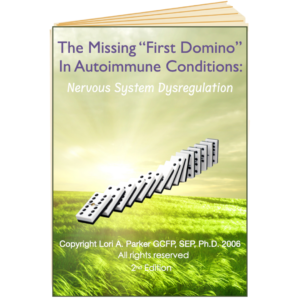Polyvagal Theory: What Is It and Why Should We Care?
$14.00
You owe it to yourself and your clients to understand this important theory. The cost to do so is only $14.00.
Description
Polyvagal Theory is a new understanding of how the Autonomic Nervous System functions. This theory is very important to anyone working with clients diagnosed with PTSD or other stress-related conditions.
You owe it to yourself and your clients to understand this important theory. The cost to do so is only $14.00.
An Introduction from the Author
I wrote Polyvagal Theory: What Is It & Why Should We Care? in an attempt to clarify Stephen Porges’ new theory about the Autonomic Nervous System. His theory is set forth in his article Orienting in a Defensive World: Mammalian Modifications of our Evolutionary Heritage: A Polyvagal Theory. Porges’ article is recommended reading for advanced students of the Somatic Experiencing® Training Program. The article, though, is extremely technical and difficult to understand (even for those with a background in physiology, biology, or neuroscience). For that reason, I enlisted the services of my friend and colleague, Dr. Benjamin Shield, to help clarify the theory.
Dr. Shield holds degrees in biochemistry and biology from the University of California, with graduate studies at the Boston University School of Medicine and Boston University School of Graduate Dentistry. He holds a doctoral degree is in the field of Health Sciences. Dr. Shield taught a one-day workshop on Porges’ theory, and I wrote the Polyvagal Theory paper for that class.
(Note: The audio version of that one-day workshop is also available as an audio file. The audio files and the Polyvagal eBook complement each other, presenting different information rather than duplicating content. Click here to learn more about the audio file.)
Overview
What if the cure for many of the dysfunctions that health care professionals are confronted with today lay in a new understanding of the way the Autonomic Nervous System operates? What if this new understanding led heath care professionals to a new way of reducing and, in some cases, eliminating many of the physiological and psycho-emotional symptoms that plague the clients who come to them for help? What if this new understanding led to a new approach which provided health care professionals with a strategy to both assess and intervene? Would you, as a health care professional, be interested?
If so, then you will be interested in Stephen Porges’ Polyvagal Theory. Dr. Stephen Porges, who has spent a great deal of his life attempting to understand the way the brain operates, believes that conditions ranging from autism to anxiety disorders may be a product of a functional – and not a structural – brain abnormality. Even physical conditions, such as asthma, can be explained by taking into account this new understanding.
Dr. Porges’ approach is not a learning, theory-based approach. It is not a biochemical approach (i.e., pharmacological). Nor is it a psycho-therapeutic approach (i.e., psychoanalytic and/or cognitive). Instead, the emphasis is on the direct and active modulation of the Autonomic Nervous System. Pharmacological strategies can be effective in changing autonomic state, but they do so without actively engaging the nervous system. Dr. Porges believes that the autonomic state can be changed by actively engaging the nervous system.
This eBook will be of value to:
- Anyone interested in the human stress response and how it affects the overall health of the individual.
- Anyone interested in the modification of behavior. Since it is a new approach to modifying behavior, it will be of value to all those who practice body-oriented psychotherapy and/or those who use the body as the vehicle for the modification of behavior.
- Somatic Experiencing® students or practitioners.
The Contents
- 60 pages
- Many resource referrals
- Detailed endnotes (for those seeking greater detail and explanation)
- References
Table of Contents
Part I: Polyvagal Theory: A New Approach to Modifying Behavior
- The Ventral Vagal Complex
- The Dorsal Vagal Complex
Part II: Current Research on Vagal Tone
- Infant Studies
- Child Studies
- Adolescent & Adult Studies
Part III: Polyvagal Theory & The Threat Response
- The Old View of the ANS & Threat Response Strategies
- Stephen Porges’ New View of the ANS and Threat Response
Part IV: The Social Engagement System
Part V: Recognizing Dysfunction
- For Bodyworkers not Trained in SE
- For Non-Touch Therapists
Part VI: Restoring Function: For Bodyworkers not Trained in SE
- Maintaining Structural Changes: The Bigger Picture
- The Perception of Safety
- The Nature of Traumatic Events
- The State of the ANS
- Lack of Re-enforcement of New Pattern
- Character Structures
Part VII: Restoring Function: For Non-Touch Therapists
- Keeping the Client Visually Engaged
- Using Voluntary Movements to Complete Frozen Facial Expressions
- Tracking for Tonal Changes
Summary and Conclusion






